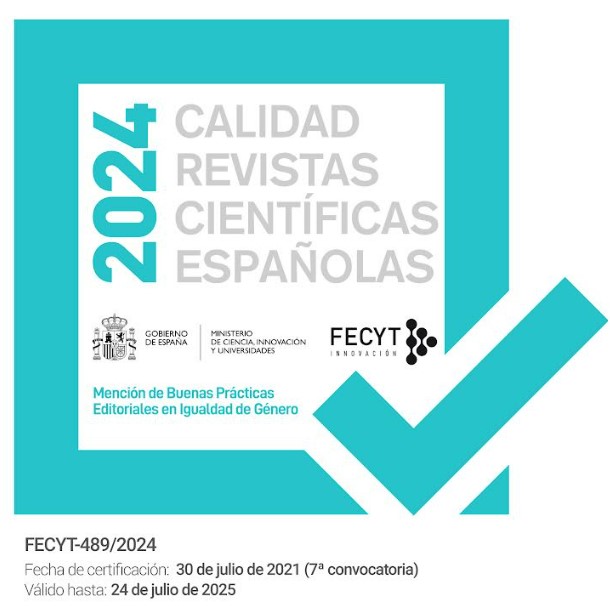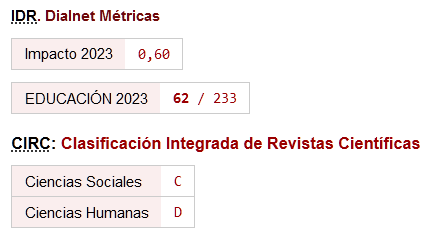Percepction of virtual classes during COVID-19 by university students
DOI:
https://doi.org/10.46661/ijeri.7299Keywords:
Online courses, perception, university, education technology, satisfaction, COVID-19Abstract
As a result of the declaration of the global pandemic due to COVID-19, universities around the world had to adapt their classes to the online mode for long periods or alternate this mode with face-to-face. The lack of planning related to this change could have consequences on teaching. This study aimed to know the perception of university students about online classes during this pandemic period and to analyze some variables associated with the degree of acceptance of these classes. To do this, 266 students belonging to 20 different degrees and 14 Spanish universities have been surveyed. A questionnaire was developed based on previous studies to collect information on the experience of the students with the online modality, the comparison between the online and face-to-face modality in terms of advantages and disadvantages, and satisfaction with the online modality. The results indicate that more than half of the students surveyed prefer face-to-face training, although they perceive some advantages associated with online training. Students also perceived face-to-face training as more effective in achieving learning objectives. Satisfaction with online teaching was related to greater interaction with peers, greater student involvement in training, and better perception of the role the teacher.
Downloads
References
Aguilar-Salinas, W. E., de las Fuentes-Lara, M., Justo-López, A., & Rivera-Castellón, R. E. (2019). Perception of students about the blended learning in the teaching of the basic engineering sciences. A university case study. Formacion Universitaria, 12(3), 15–26. https://doi.org/10.4067/S0718-50062019000300015
Agung, A. S. N., & Surtikanti, M. W. (2020). Students’ Perception of Online Learning during COVID-19 Pandemic: A Case Study on the English Students of STKIP Pamane Talino. SOSHUM : Jurnal Sosial Dan Humaniora, 10(2), 225–235.
http://ojs.pnb.ac.id/index.php/SOSHUM/article/view/1316/1456
Arslan, G., Yildirim, M., & Zangeneh, M. (2021). Coronavirus anxiety and psychological adjustment in college students: Exploring the role of college belongingness and social media addiction. International Journal of Mental Health and Addiction, 20(3), 1546-1559. https://doi.org/10.1007/s11469-020-00460-4
Bączek, M., Zagańczyk-Bączek, M., Szpringer, M., Jaroszyński, A., & Wożakowska-Kapłon, B. (2021). Students’ perception of online learning during the COVID-19 pandemic: a survey study of Polish medical students. Medicine, 100(7) e24821. https://doi.org/0.1097/MD.0000000000024821
Bali, S., & Liu, M. C. (2018). Students’ perceptions toward online learning and face-to-face learning courses. Journal of Physics: Conference Series, 1108(1), 012094. https://doi.org/10.1088/1742-6596/1108/1/012094
Cucinotta, D., & Vanelli, M. (2020). WHO Declares COVID-19 a Pandemic. Acta Bio-Medica: Atenei Parmensis, 91(1), 157–160. https://doi.org/10.23750/abm.v91i1.9397
Fedynich, L., Bradley, K. S., & Bradley, J. (2015). Graduate Students' Perceptions of Online Learning. Research in Higher Education Journal, 27, 1-13. https://eric.ed.gov/?id=EJ1056187
Fortune, M. F. (2011). Making the Jump to Hybrid Space: Employing Face-to-Face and Online Modalities in a Special Event Planning Course. SCHOLE: A Journal of Leisure Studies and Recreation Education, 26(2), 39–45. https://doi.org/10.1080/1937156X.2011.11949679
Geçer, E. & Bağci, H. (2022) Examining students’ attitudes towards online education during COVID-19: evidence from Turkey. Cultura y Educación, 34(2). 297-324. https://doi.org/10.1080/11356405.2022.2031785
Gray, J. A., & DiLoreto, M. (2016). The Effects of Student Engagement, Student Satisfaction, and Perceived Learning in Online Learning Environments This. NCPEA International Journal of Educational Leadership Preparation, 11(1), 98–119. https://eric.ed.gov/?id=EJ1103654
Guerrero, K. F., & López de la Madrid, M. C. (2019). Evaluación de Cursos en Línea desde la Perspectiva del Estudiante: Un Análisis Mixto de Datos. Perspectiva Educacional, 58(1), 92–114. https://doi.org/10.4151/07189729-vol.58-iss.1-art.813
Kemp, N., & Grieve, R. (2014). Face-to-face or face-to-screen? Undergraduates’ opinions and test performance in classroom vs. Online learning. Frontiers in Psychology, 5(NOV), 1–11. https://doi.org/10.3389/fpsyg.2014.01278
Kırmacı, Ö., & Acar, S. (2018). The problems of campus students in simultaneous online distance education. Journal of Theory and Practice in Education, 14(3), 276–291. https://doi.org/10.17244/eku.378138
Koohang, A., & Durante, A. (2003). Learners’ Perceptions toward the Web-based Distance Learning Activities/Assignments Portion of an Undergraduate Hybrid Instructional Model. Journal of Information Technology Education: Research, 2, 105–113. https://doi.org/10.28945/316
Marín Díaz, V., Sampedro Requena, B. E., & Vega Gea, E. (2017). Percepciones de los estudiantes universitarios sobre las plataformas de formación. Estudio de caso. RIED. Revista Iberoamericana de Educación a Distancia, 20(1), 282-303. https://doi.org/10.5944/ried.20.1.16518
Platt, C., Amber, N., & Yu, N. (2014). Virtually the Same?: Student Perceptions of the Equivalence of Online Classes to Face-to-Face Classes. Journal of Online Learning and Teaching, 10(3), 489. https://jolt.merlot.org › vol10no3 › Platt_0914
Sanabria, A., & Hernández, C. (2011). Percepción de los estudiantes y profesores sobre el uso de las TIC en los procesos de cambio e innovación en la enseñanza superior. Aloma: Revista de Psicologia, Ciències de l’educació i de l’esport Blanquerna, 29, 273–290. http://www.revistaaloma.net/index.php/aloma/article/view/106
Settersten, RA; Bernardi, L; Härkönen, J; Antonucci, TC; Dykstra, PA; Heckhausen, J; Kuh, D; Mayer, KU; Moen, P; Mortimer, JT; Mulder, CH; Smeeding, TM; van der Lippe, T; Hagestad, GO; Kohli, M; Levy, R; Schoon, I; Thomson, E. (2020). Understanding the effects of Covid-19 through a life course lens. Advances in Life Course Research, 45, 100360. https://doi.org/10.1016/j.alcr.2020.100360
Tibi, M. H. (2019). Undergraduate student teachers’ perceptions of the quality of online courses. IJAEDU- International E-Journal of Advances in Education, 5(14), 123–135. https://doi.org/10.18768/ijaedu.593872
Tichavsky, L. P., Hunt, A., Driscoll, A., & Jicha, K. (2015). “It’s Just Nice Having a Real Teacher”: Student Perceptions of Online versus Face-to-Face Instruction. International Journal for the Scholarship of Teaching and Learning, 9(2), 1-8. https://doi.org/10.20429/ijsotl.2015.090202
Tratnik, A., Urh, M., & Jereb, E. (2019). Student satisfaction with an online and a face-to-face Business English course in a higher education context. Innovations in Education and Teaching International, 56(1), 36–45. https://doi.org/10.1080/14703297.2017.1374875
Villarejo-Galende, A., Azcárate-Díaz, F. J., Laespada-García, M. I., Rábano-Suárez, P., Ruiz-Ortiz, M., Domínguez-González, C., Calleja Castaño P, Martínez-Salio A, Moreno García S., & Pérez Martínez, D. A. (2021). Cambio de sesiones docentes presenciales a virtuales durante la pandemia de COVID-19 en un servicio de neurología: descripción del proceso y satisfacción de los usuarios. Revista de Neurologia, 72(9), 307–312. https://doi.org/10.33588/rn.7209.2020664
Downloads
Published
How to Cite
Issue
Section
License
Copyright (c) 2022 Isabel R. Rodríguez-Ortiz, Francisco Javier Moreno Pérez

This work is licensed under a Creative Commons Attribution-NonCommercial-NoDerivatives 4.0 International License.












